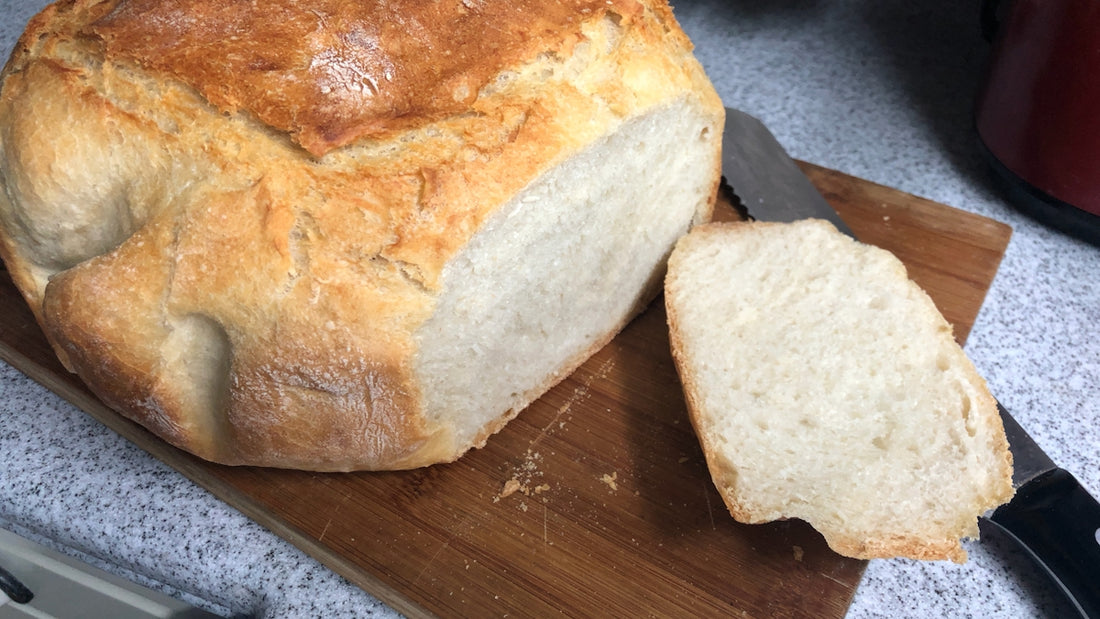
Easy Sourdough Bread: Unlock the Magic with Simple Baking Techniques
If you've ever been captivated by the allure of beautifully crusty and tangy sourdough bread, you're not alone. The art of sourdough baking seems to unlock a magical world of flavor, nutrition, and artisanal pride. Whether you're a seasoned baker or a curious beginner, with just a few basic techniques, you can embark on your own journey and enjoy homemade sourdough bread. In this blog post, we'll delve into everything you need to know to get started with easy sourdough bread, harnessing the power of simple baking methods and understanding the science behind sourdough fermentation.
Understanding the Sourdough Starter
Before you can craft that perfect loaf, understanding the cornerstone of any sourdough bread — the sourdough starter — is crucial. A sourdough starter is essentially a mix of flour and water that captures wild yeast and beneficial bacteria from the environment. This culture is what gives sourdough its unique flavor and texture, while also acting as a natural leavening agent. Unlike commercial yeast, sourdough starter promotes wild yeast fermentation, leading to a healthier and more digestible loaf.
How to Feed Your Sourdough Starter
Feeding your sourdough starter is essential to keep it alive and flourishing. Typically, your starter requires a consistent feeding routine. Here's a simple sourdough starter feeding schedule to keep your culture active:
- Remove Starter: Begin by discarding half of your starter to avoid overgrowth.
- Add Flour and Water: Add equal parts (by weight) of flour and water to the remaining starter. A 1:1:1 ratio of starter, flour, and water works well.
- Mix and Wait: Stir the mixture until fully combined, then let it rest at room temperature until bubbly and active.
If you're not planning to bake often, you can learn how to store sourdough starter in the refrigerator, feeding it just once a week.
Sourdough Starter vs. Commercial Yeast
The key difference between sourdough starter and commercial yeast lies in their complexity and health benefits. Sourdough fermentation makes nutrients more bioavailable and can lower the glycemic index of bread, potentially making it a better choice for diabetics. For more insights on this, the sourdough for diabetics section of our website offers detailed information.
Crafting Easy Sourdough Bread
Embarking on the journey of making your first loaf can be daunting but worry not. The process is as rewarding as it is satisfying. Let's simplify the steps:
Ingredients
- 500g bread flour
- 350g water
- 100g active sourdough starter
- 10g salt
Equipment
Our Professional Baking Tools kit includes essential items like a sourdough starter jar, pastry mat, and scraper that will assist you in your homemade sourdough adventure.
Instructions
- Mixing: Combine water and starter in a large bowl. Add flour and mix until no dry bits remain. Cover with a towel and let it rest for 30 minutes.
- Kneading: Add salt and knead the dough by folding it in the bowl. Let it rest for 30 minutes before another brief knead.
- Bulk Fermentation: Allow the dough to ferment at room temperature for about 6 to 12 hours until doubled in size. This slow process helps develop the signature sourdough flavor.
- Shaping: Gently deflate the dough and shape it into a ball. For guidance on how to shape sourdough bread, our blog offers detailed tutorials.
- Final Proofing: Place the shaped dough seam side up in a floured banneton or a bowl lined with a tea towel. Cover and let it proof for another 2 to 4 hours.
- Scoring and Baking: Preheat your oven with a Nonna Bella 4.5Qt Enameled Cast Iron Dutch Oven inside. Transfer the proofed dough to parchment paper, score the surface using Bread Lame Dough Score Cutting Tools, and bake in the pot for 20 minutes covered, followed by 25 minutes uncovered at 230°C (450°F) until golden brown.
Troubleshooting Your Sourdough Bread
Baking sourdough doesn't always go as planned, but don't be discouraged. Here are some common sourdough troubleshooting tips:
- Dense Loaf: Insufficient fermentation or not being active enough starter can result in a dense loaf. Ensure your starter is bubbly and allows ample rise time.
- Overproofing: If your dough overspreads, it may have over-proofed. You can prevent this by monitoring the proofing conditions and adjusting times.
- Flat Loaf: This can happen if the dough isn’t shaped tightly enough. Practice makes perfect, so don't stress over it.
Mastering Sourdough Scoring
The art of scoring not only affects the bread's appearance but also its expansion and texture. Experimenting with the best sourdough scoring techniques will allow you to unlock artistic expressions on your loaf. Use our Bread Scoring Tools to create beautiful patterns.
Diving Into My Sourdough Life
As you dive deeper into sourdough baking, you'll discover it becomes more than just making bread. It’s a lifestyle of mindfulness, patience, and culinary creativity. Explore My Sourdough Life for personal stories, recipes, and community tips.
Conclusion
Sourdough baking is a gratifying adventure that brings the magic of wild yeast fermentation into your kitchen. By embracing simple techniques and understanding the sourdough starter, you can produce artisanal-quality bread with ease. Remember, every twist and turn is part of your learning journey.
For more inspiration, products, and detailed guides, explore Italian Sourdough. Happy Baking!
